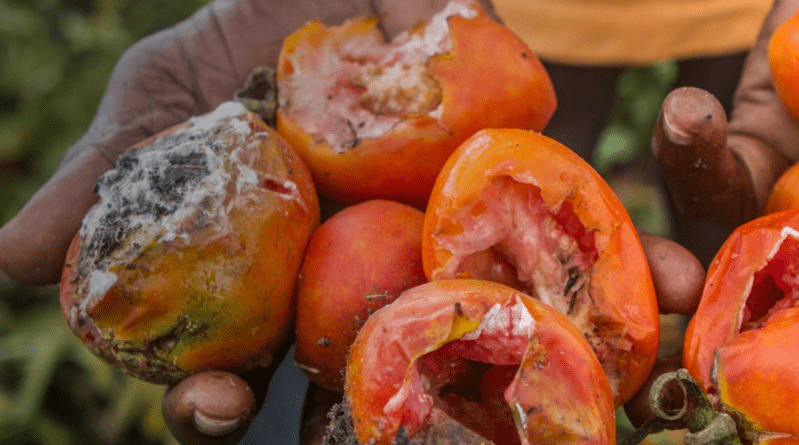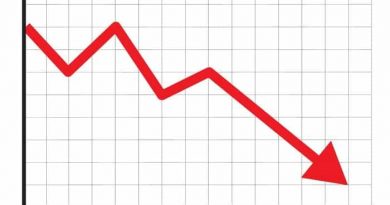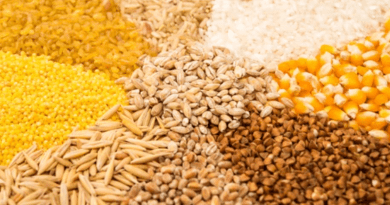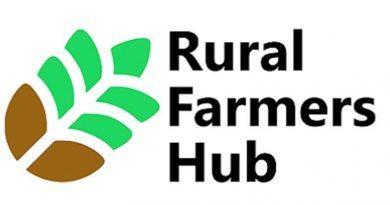The Soaring Food Waste and Food Security: How to Use Food Waste for Good
- As global food production is on the rise, food waste is soaring.
- About 40% of all food goes uneaten, but 10% of the world’s population are hungry
- This edible waste also contributes to climate change, increasing the risk of food insecurity
- Every year, 1.2 billion tonnes of food is wasted before even reaching the shops
- 20-30% of grain is lost during storage
- Approximately 14% of food produced is lost between storage and retail.
We are stuck in a catch-22. Growing populations need more food, but we can’t afford to strip any more of the world’s resources to grow it. Have we been sitting on the solution all along?
Farmland already occupies 38% of all land – about five billion hectares’ (19 million sq miles’) worth.
But agricultural areas will need to expand considerably if we are to feed the growing, and increasingly affluent, global population. In our urgency to produce more food, some farming methods are stripping nutrients from the soil, fuelling climate change and driving biodiversity loss. We also risk undermining future generations’ chances to grow food.
Yet, there is a way we could increase the amount of food we produce without having to create any more farmland, grow any more crops or rear more animals. Enormous quantities of edible food are thrown away every day by farmers, suppliers, manufacturers, retailers and ultimately consumers. Could cutting the amount of waste help us feed the world?
While consumers have their own part to play by only buying what they need and making better use of leftovers, every year, an estimated 1.2 billion tonnes of food is wasted – the weight of 10 million blue whales – before even reaching the shops. Food is lost throughout the supply chain, from field to harvest, during processing and in transportation.
In developing countries, technological limitations, along with a lack of labour, finance or proper infrastructure for transportation and storage are the major causes of food loss. In industrialised nations, market prices for crops can encourage waste – if they are too low, farmers may choose not to make additional passes through their fields and products that are less than perfect are often not worth picking as consumers avoid them. Overripe fruit, wonky vegetables or low-quality produce will often end up in landfill or are simply left in the ground.
Reducing food loss and waste is critical to eradicating food insecurity and addressing climate change. The solutions, however, are not always straightforward, leading agricultural scientists to come up with some innovative ideas for how to tackle the problems involved.
How do we prevent waste? One way might be to use robots to automate some of the harvesting process, meaning crops are picked more accurately. But even machines have flaws when it comes to spotting ripe crops. So Stephanie Walker, a crop scientist at New Mexico State University, is experimenting with adapting crops to suit robots’ needs.
In her field laboratory in New Mexico, Walker is using selective breeding to produce chillies that work better with harvesting machinery. The peppers are difficult to pick: the plants are bushy and the fruit sits close to the stem. Green chillies are the hardest of all as they are not yet ripe so are unwilling to let go of the plant.
“Until this year, the New Mexico green chilli has been completely hand harvested because harvester machines broke too many fruit, too many were left on the stem, and plants would often uproot,” says Walker.
After trialling numerous harvesting machines, Walker realised it was the chillies that needed to change. So she bred a new plant, the NuMex Odyssey, a strong, single-stemmed chilli with fruit that sits higher up on the plant, specifically developed for mechanical harvest efficiency.
Once a fruit has been picked, the remaining plant might have little value to a farmer, but some are making use of these agricultural byproducts that would otherwise go to waste, from “ugly fruit” skincare products to textiles made from starch. In the UK and East Africa, insects fed on vegetable waste become high-protein food for animals and humans, and in the US leftover soy from tofu manufacturing is turned into gluten-free flour.
“There’s a $46bn (£34bn) upcycled food product market out there,” says Emma Chow, who leads the Ellen MacArthur Foundation Food Initiative. “We can turn agricultural residues and farm-level byproducts into ingredients, making the most of what we already produce.”
Rice, the world’s most popular crop, is another example where there is considerable potential for using more waste. For every tonne of rice produced, a tonne of straw is grown. Some of it is used as bedding and fodder for livestock, or in building materials, or is ploughed back into the soil as fertiliser, but much of the straw is left to rot or burned in the fields. Rice straw can be processed, however, to produce biogas, providing energy for both domestic and commercial uses. The digested straw also makes a nutritious fertiliser and provides a good substrate for mushroom growing, so farmers can gain an additional income.
“Around 800 million tonnes of rice straw is produced globally each year,” says Patricia Thornley, professor of engineering and applied science at Aston University in Birmingham, UK. “We want to use this to improve the livelihoods of farmers and protect the environment we all share.t
By 2050, approximately 80% of all food will be consumed in cities. An increasing urban population combined with global trade networks means food supply chains have become long and complex, which leads to waste. On average, 14% of food is lost between harvest and distribution, with North America and Europe (where 16% of food is lost) being more wasteful than less developed regions like Oceania (where 8% of food is lost) and Latin America and the Caribbean (12% is lost). This might be, in part, because developed economies consume more perishable goods like fresh fruit, vegetables and meat, compared to less developed economies, which rely on grains and dried goods. The relatively lower cost of food compared to income may also contribute to more wasteful habits in developed nations. But urbanisation is also making the problem worse, adding more links in the chain between farm and fork that can lead to spoilage.
In the UK, 84% of fruit and 46% of vegetables are imported, for example. Climate change, water scarcity, labour shortages and Covid-19 all threaten the supply. Growing fruit and vegetables closer to home could protect us against these shocks.
“Cities can produce about a third of their total food needs within the urban area which is a huge piece of the puzzle,” says Chow. “Growing perishable foods, such as lettuces and cucumbers, in cities results in a lot less waste as it’s much quicker to get it from the farm to the plate. Beyond the urban boundary, the big opportunity is to reconnect urban consumption with what’s already produced in the peri-urban area – the doughnut region surrounding cities. We need to remap supply chains so food is kept local, rather than being sent off around the world.”
Currently, 2.8 billion tonnes of organic waste is created in urban centres but less than 2% of it is captured and used again. Discarded produce, byproducts and sewage are all full of nutrients that could be harnessed to grow new food or create biomaterials. Could something be done with these materials?
“The vast majority of urban waste is sewage – an ultimate byproduct of food which can be circulated back into high-value fertilisers. Then there is household and commercial waste. Food manufacturing results in all sorts of useful byproducts,” says Chow.
These byproducts also include bran left over from pasta manufacturing that can be made into paper, orange peel and wood fibre turned into sustainable fabrics, and starch and brewery residues used to create sustainable alternatives to plastic packaging.
“We believe waste equals resources,” says Anne Lamp, co-founder of bioplastics manufacturer Traceless, and an engineer at the Institute for Environmental Technology and Energy Economics (IUE) at the Technical University Hamburg, Germany. Traceless take the leftover residues from agricultural production and use it to manufacture biodegradable plastics.
“These residues accrue, for example, when beer is brewed or starch is produced,” explains Lamp. “In these food production processes, only the starch fraction is taken from the grain. Everything else is left. We extract the remaining natural polymers from these residues and transform them into a granule to make our base material. This can then be processed into films, coatings and rigid bioplastics.”
However, the use of agricultural waste to produce bioplastics is not without its challenges. The composition of the waste can fluctuate and it often has a high water content – which makes transportation difficult. But Lamp feels it is important to use resources that are already in existence, rather than producing new polymers from fossil fuels.
Reusing resources can help to reduce waste, but what if that idea was taken to an extreme?
Some farms discharge large quantities of agrochemicals, organic matter and drug residues into the environment. Agricultural runoff pollutes aquatic ecosystems, posing a risk not just to habitats and wildlife, but also to human health. Nutrient pollution can also result in eutrophication, when a body of water becomes so enriched with nutrients that algae and plants grow in abundance. These algal blooms create dead zones, where aquatic life cannot survive.
But what if agriculture was separated from nature altogether? Could a closed-system farm recycle all its waste and leave no mark on the environment?
In recent years, there has been an increase in controlled environment agriculture, where food production takes place in greenhouses, polytunnels or warehouses, and uses systems such as vertical farming, hydroponics, aeroponics and aquaponics.
“All of these can be set up so they are circular,” says Chow. “Aquaponics is really good as it uses nutrient cycling and water cycling, and can be run on renewable energy.”
Each year, 70% of the world’s accessible freshwater is used for agriculture, but almost half of this is lost to the environment.
Aquaponics, a combination of aquaculture and hydroponics, needs no fertilisers, pesticides or herbicides, and nothing is discharged into the environment. No nutrients are lost and the water is continually recycled. What’s more, aquaponics can be done anywhere, at any scale. Fish and plants can be produced in industrial-scale warehouses, on roofs, even in outer space. This closed loop farming technique could allow urban populations to produce fresh local produce with little or no supply chain, food miles or pollution.
“These are the chickens of the water,” says Sara Barrento, a marine biologist and science communicator at the Centre for Sustainable Aquatic Research (CSAR) at Swansea University, in the UK, as we peek into one of the 30 or so barrels in her dimly lit laboratory. Inside, are baby tilapia, a freshwater fish commonly used in aquaponics. At this age they are just a little bigger than tadpoles. “They’ll eat anything.”
Next to us water trickles constantly into a tank full of what look like spiky rubber wheels, bobbing about in the water.
“The bacteria sticks to them,” explains Rob Smith, CSAR’s aquatic systems senior technician, showing me the cleaning system that keeps the water circling back to the fish. A mechanical filter removes the solid fish waste from the water and a bio-filter removes the dissolved waste. Bacteria in the bio-filter convert ammonia, toxic to fish, into nitrate. The water is pumped through plant grow beds, the plants absorb the nutrients, and the water is returned to the fish purified.
CSAR is currently working on the Biophilic Living project to develop optimum growing conditions for an aquaponics system that will be placed on rooftops in Swansea. The project promises to transform the site of a former Woolworths store, converting it into homes, offices and a community urban farm. The site will feature two greenhouses at roof level, the largest of which will be home to an aquaponics system, designed to produce up to 4.5 tonnes of fruits, vegetables, salads and herbs each year.
Rainwater will be harvested to provide water for irrigation while energy will be produced by a bio-solar roof that combines photovoltaic panels, roof tiles and skylights with greenery. Carbon dioxide will be captured from people in their offices and released into the growing spaces, where the plants will absorb it, boosting their growth.
It sounds straightforward. However, the nutrients in the effluent produced by fish are not always perfectly suited to the needs of the plants, and there will be some inedible waste from the crops too. To fully close the loop, Biophilic Living are planning to recycle the organic waste, using it to produce microalgae that can be fed back to the fish.
“We want to introduce sustainable fish feeds created through the production of marine microalgae, grown in a BioFence – a tank made of a series of tubes through which algae, nutrients, water and carbon dioxide are circulated in order to maximise the amount of light reaching the algal cells. These diets will be optimised for both fish production and plant growth,” Barrento explains.
Microalgae are living things but neither plants nor animals. When under stress, they produce different compounds to protect themselves from threats. In a controlled environment like a BioFence, Barrento and her colleagues can stress the microalgae in different ways: giving it different nutrients, such as phosphorus or nitrogen, or controlling the amount of light (hence the dimly lit lab) or the temperature. “As a consequence, the microalgae produce different compounds that can be useful to us,” she says. Solving this part of the puzzle could help to create a perfectly circular ecosystem of fish, algae and plants that each feed off the others’ waste products, Barrento claims.
It is an approach that replicates what already happens in nature – waste from one organism becomes food for another, which ultimately becomes food for the first. Take trees: dead wood becomes food for fungi, which then decompose, enriching the soil to feed the next tree. But humans disrupt these endless loops.
We might think of waste as an inevitable consequence of modern life but, in nature, there is no such thing as waste.
BY KATHERINE LATHAM, BBC




